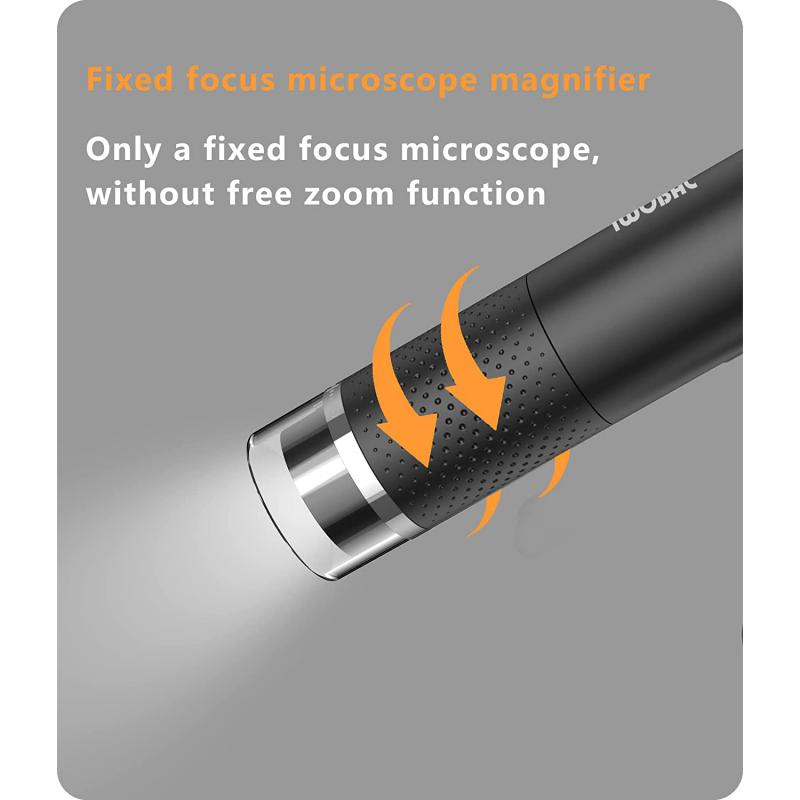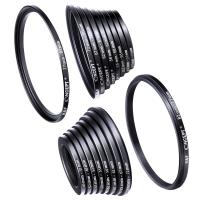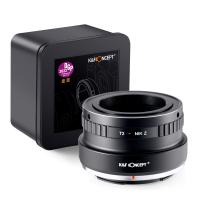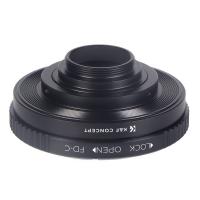How To Do Microscope Calculations ?
Microscope calculations involve determining various parameters such as magnification, field of view, and resolution. To calculate magnification, divide the total magnification of the objective lens by the magnification of the eyepiece. Field of view can be calculated by dividing the diameter of the field of view of the eyepiece by the magnification of the objective lens. Resolution can be calculated using the formula: resolution = (wavelength of light) / (2 x numerical aperture of the objective lens). These calculations are essential for accurately observing and measuring objects under a microscope.
1、 Magnification calculation
Microscope calculations are essential for accurately determining the magnification of an object under observation. To calculate magnification, you need to consider the magnification power of the objective lens and the eyepiece lens.
First, determine the magnification power of the objective lens. This information is usually provided by the manufacturer and is typically engraved on the lens. It is represented by a number followed by an "x" (e.g., 10x, 40x, 100x). This number indicates how many times larger the object will appear when viewed through that lens.
Next, determine the magnification power of the eyepiece lens. This information is also provided by the manufacturer and is typically engraved on the eyepiece. It is usually 10x, but it can vary depending on the microscope model.
To calculate the total magnification, multiply the magnification power of the objective lens by the magnification power of the eyepiece lens. For example, if the objective lens is 40x and the eyepiece lens is 10x, the total magnification would be 400x (40 x 10 = 400).
It is important to note that the total magnification is not the only factor that determines the level of detail observed. The resolution of the microscope, which is influenced by factors such as the numerical aperture and the wavelength of light used, also plays a significant role in the clarity and detail of the image.
Additionally, advancements in technology have led to the development of digital microscopes that offer higher magnification capabilities and the ability to capture and analyze images using computer software. These microscopes often have built-in magnification calculators that automatically determine the total magnification based on the objective and eyepiece lenses used.
In conclusion, microscope calculations, specifically magnification calculations, are crucial for accurately determining the level of enlargement when observing objects. Understanding the magnification power of the objective and eyepiece lenses is essential for calculating the total magnification. However, it is important to consider that magnification alone does not determine the level of detail observed, as factors like resolution also play a significant role.

2、 Field of view calculation
Microscope calculations are essential for accurately measuring and analyzing microscopic specimens. One important calculation is the field of view (FOV), which refers to the area visible through the microscope lens. Calculating the FOV allows scientists and researchers to determine the size and dimensions of the objects they are observing.
To calculate the FOV, you need to know the magnification power of the microscope and the diameter of the field diaphragm. The field diaphragm is a circular opening located in the microscope's condenser that controls the amount of light entering the lens system.
First, measure the diameter of the field diaphragm using a ruler or a calibrated eyepiece micrometer. Next, determine the magnification power of the microscope by multiplying the magnification of the objective lens by the magnification of the eyepiece. For example, if the objective lens has a magnification of 40x and the eyepiece has a magnification of 10x, the total magnification is 400x.
Once you have the magnification power and the diameter of the field diaphragm, you can calculate the FOV using the following formula:
FOV = (diameter of field diaphragm) / (total magnification)
For example, if the diameter of the field diaphragm is 2 millimeters and the total magnification is 400x, the FOV would be 0.005 millimeters or 5 micrometers.
It is important to note that the FOV may vary depending on the microscope and the objective lens being used. Additionally, advancements in technology have led to the development of microscopes with digital imaging capabilities, allowing for more precise and automated calculations of the FOV.
In conclusion, calculating the field of view is a crucial aspect of microscope calculations. By knowing the magnification power and the diameter of the field diaphragm, scientists can accurately determine the size and dimensions of microscopic specimens.

3、 Depth of field calculation
Microscope calculations, including depth of field calculation, are essential for accurately measuring and analyzing microscopic specimens. The depth of field refers to the range of distances along the optical axis within which an object appears sharp and in focus. It is a crucial parameter in microscopy as it determines the thickness of the specimen that can be observed in focus at a given magnification.
To calculate the depth of field, several factors need to be considered. These include the numerical aperture of the objective lens, the wavelength of light used, and the refractive index of the medium between the lens and the specimen. The formula for depth of field calculation is:
Depth of Field = (2 * N * λ) / (n * NA^2)
Where N is the refractive index of the medium, λ is the wavelength of light, n is the refractive index of the specimen, and NA is the numerical aperture of the objective lens.
It is important to note that the above formula provides a theoretical calculation of the depth of field. In practice, other factors such as aberrations, lens quality, and specimen thickness can affect the actual depth of field observed.
Advancements in microscopy techniques, such as confocal microscopy and super-resolution microscopy, have pushed the limits of depth of field calculations. These techniques utilize complex algorithms and computational methods to enhance the resolution and depth of field beyond what is achievable with traditional microscopy.
In conclusion, understanding how to calculate the depth of field in microscopy is crucial for obtaining accurate measurements and observations. However, it is important to consider the limitations and advancements in microscopy techniques to fully appreciate the depth of field in modern microscopy.

4、 Resolution calculation
Resolution calculation in microscopy is an essential aspect of understanding the capabilities and limitations of a microscope. It refers to the ability of a microscope to distinguish two closely spaced objects as separate entities. The resolution of a microscope is determined by several factors, including the numerical aperture (NA) of the objective lens and the wavelength of light used.
To calculate the resolution of a microscope, one can use the Abbe equation, which states that the resolution (R) is equal to half the wavelength of light (λ) divided by the numerical aperture (NA) of the objective lens:
R = λ / (2 * NA)
This equation suggests that the resolution of a microscope can be improved by using shorter wavelengths of light and increasing the numerical aperture of the objective lens. In recent years, advancements in microscopy techniques have allowed for the use of shorter wavelengths, such as those in the ultraviolet and X-ray regions, which have significantly improved resolution capabilities.
Additionally, the development of super-resolution microscopy techniques, such as stimulated emission depletion (STED) microscopy and structured illumination microscopy (SIM), has pushed the limits of resolution beyond the diffraction limit. These techniques utilize clever strategies to overcome the diffraction barrier and achieve resolutions on the nanoscale.
It is important to note that while resolution calculations provide a theoretical limit, the actual resolution achieved in practice may be lower due to various factors, including sample preparation, imaging conditions, and the quality of the microscope system.
In conclusion, understanding how to calculate microscope resolution is crucial for assessing the capabilities of a microscope. Advances in microscopy techniques and technologies continue to push the boundaries of resolution, enabling researchers to explore the intricate details of biological and material samples at ever smaller scales.








































